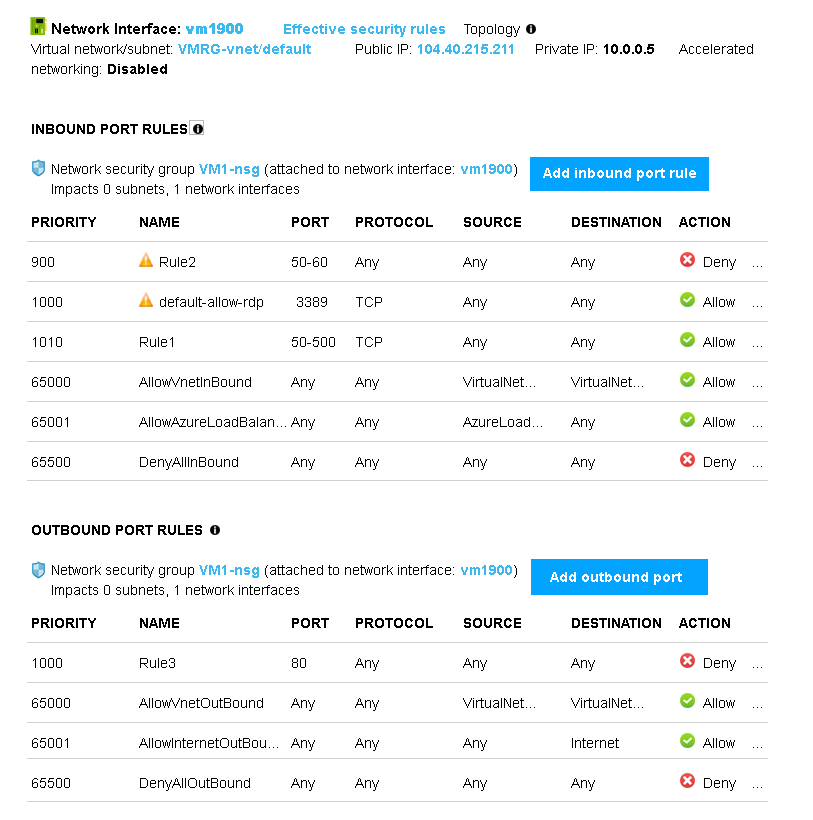

HOTSPOT -
You have an Azure subscription named Subscription1. Subscription1 contains a virtual machine named VM1.
You install and configure a web server and a DNS server on VM1.
VM1 has the effective network security rules shown in the following exhibit.
Use the drop-down menus to select the answer choice that completes each statement based on the information presented in the graphic.
NOTE: Each correct selection is worth one point.
Hot Area:

piotr
Highly Voted 5 years, 7 months agodumpmaster
5 years, 6 months agoChinaBandit
5 years, 6 months agoBenkyoujin
5 years, 5 months agobizie
Highly Voted 5 years, 8 months agotartar
4 years, 9 months agoxofowi5140
Most Recent 4 years, 8 months agoXolexHp
3 years, 9 months agoread_only
4 years, 9 months agoValica
4 years, 9 months agocolinquek
4 years, 9 months agolearner301
4 years, 9 months agoBanaben
4 years, 10 months agoAusias18
4 years, 10 months agojmprbridge
4 years, 10 months agonicolase
4 years, 10 months agomisushant
4 years, 10 months agogboyega
4 years, 10 months agoShunya
4 years, 11 months ago[Removed]
4 years, 11 months agosourabh7257
4 years, 10 months agosebtiny
5 years agoSIDNEY1
5 years, 1 month agoPTC
4 years, 11 months agoPTC
4 years, 11 months agoRPFranklin
5 years agoBladiebla
5 years, 1 month agoMathew
5 years, 4 months ago